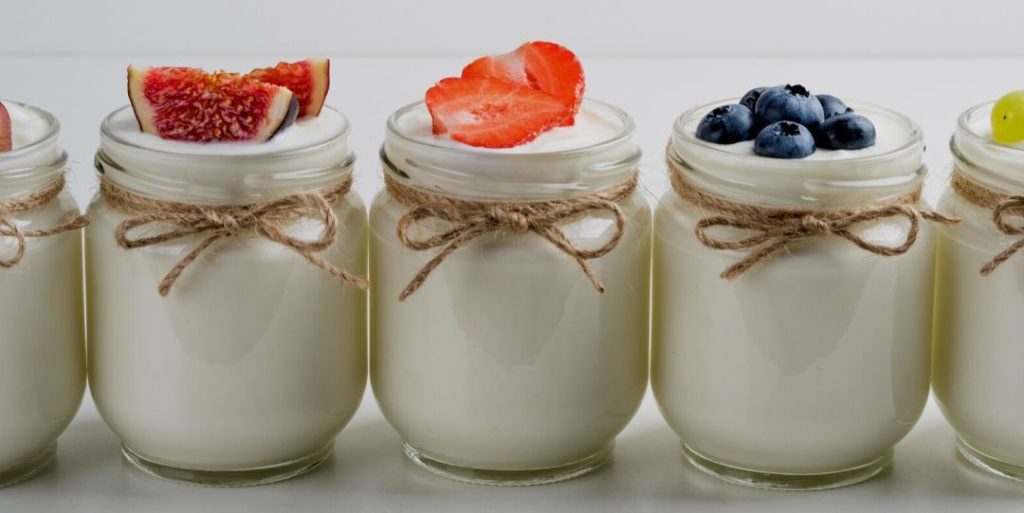You probably know that you shouldn’t mix certain medications because of the risk of dangerous drug-drug interactions.
But you may not be aware of food-drug interactions, which can occur when a medication interacts with a food or beverage to cause undesirable effects.1 The medication may not work as well as it should, or the combination can cause a negative side effect or exacerbate an existing one. Also, it may prevent your body from fully absorbing the nutrients from the food or beverage in question.
“There are different types of interactions, and the magnitude of the interaction depends on many factors,” says Lingtak-Neander Chan, PharmD, a professor of pharmacy at the University of Washington School of Pharmacy. For example, your age, sex, medical history and body weight and the number and dosage of medications used can all influence the way drugs and nutrients interact in your body.
“There is also a lot of misleading information out there on the internet,” he notes.
We highlight four of the most common food-drug interactions, along with tips on how to avoid these combinations and the problems they can cause. However, you should always talk to your doctor about potential interactions with medications you are taking or plan to take.

Cardiovascular Drugs and Potassium
Certain cardiovascular drugs such as angiotensin-converting enzyme (ACE) inhibitors and angiotensin II receptor blockers (ARBs) should not be taken with potassium-rich foods. ACE inhibitors include drugs like lisinopril, Altace (ramipril), Vasotec (enalapril) and captopril, while some examples of ARBs are Cozaar (losartan), Diovan (valsartan), Atacand (candesartan) and Micardis (telmisartan). These medications, which are used to treat high blood pressure and heart disease, make blood vessels relax and dilate, decrease the heart’s workload and improve circulation.
“These drugs have the tendency to increase potassium retention by the body, and elevated potassium concentration in the blood increases the risk for developing irregular heart rhythms,” explains Chan. People taking ACE inhibitors or ARBs should avoid large amounts of high-potassium foods like bananas, oranges, avocados, tomatoes, white and sweet potatoes, salt substitutes with potassium, and dried fruits, especially apricots.2
On the other hand, natural licorice root contains a sweetening compound called glycyrrhizin, which can reduce potassium levels and throw off heart rhythms.3 The US Food and Drug Administration (FDA), previously warned that eating just two ounces of black licorice a day for at least two weeks could cause you to end up in the hospital with an irregular heart rhythm (arrhythmia), particularly if you’re 40 or older.4 Some people can also experience high blood pressure, swelling, lethargy and congestive heart failure.
However, if you’re eating this in conventional candy form, you likely have very little to worry about. The FDA reveals that anise oil, which has a similar taste and smell, is used in many popular candies to mimic licorice flavor. Even candies that do have licorice extract fall far below levels the FDA considers dangerous. Nonetheless, if you do experience an irregular heart rhythm or muscle weakness after eating black licorice, stop eating it and call your doctor.
“Bottom line, too much or too little potassium in the blood can cause dangerous and life-threatening cardiac side effects,” says Lisa Cimperman, MS, RDN, LD, medical science liaison for Fresenius Kabi USA, a company that develops technologies for infusion, transfusion and clinical nutrition.

Antibiotics & Dairy Products
Quinolone antibiotics like Cipro (ciprofloxacin), levofloxacin and moxifloxacin, and tetracyclines like Vibramycin (doxycycline) and Minocin (minocycline), bind to the calcium in dairy-based foods and beverages.5
“Dairy products and other calcium-rich products decrease the absorption of these antibiotics from the gut, which may lead to treatment failure for infections,” says Chan. In one study,6 the absorption of ciprofloxacin was reduced by up to 36% when participants took the drug at the same time as milk or yogurt. Dairy products also had a major impact on the absorption of tetracycline.7
You should take extra care to eat carefully to ensure your antibiotics can properly fight your infection. Milk, cheese, ice cream, yogurt and butter, as well as calcium-fortified foods, and calcium supplements, should not be taken while on these particular types of antibiotics. If for some reason these “cannot be avoided, separate the drug and dairy products by at least two hours,” Chan advises. (See MedShadow’s 5 Things You Need to Know About Antibiotics.
Calcium has also been shown to interfere with osteoporosis medications such as Fosamax (alendronate)8 and thiazide diuretics9 for high blood pressure.

Statins and Grapefruit?
Eating grapefruit or having a glass of grapefruit juice in the morning can be a healthy way to start your day – the fruit is high in vitamin C and potassium. But the FDA has a video and post on their website reminding consumers that grapefruit can interact with many drugs.10 They explain how grapefruit interacts with these drugs and how they work in the body, especially those taken for high blood pressure or an irregular heartbeat.
Grapefruit juice can increase or decrease the amount of certain drugs that enter our blood stream. When it raises the level of a drug in our system, it can cause more side effects. For example, “with certain statins that lower cholesterol levels, such as Zocor [simvastatin] and Lipitor [atorvastatin], it’s important to avoid grapefruit and grapefruit juice consumption because it can raise statin levels in the blood and increase the risk for serious side effects,” according to Stacy Kennedy, MPH, RD, a senior clinical nutritionist at the Dana-Farber/Brigham and Women’s Cancer Center in Boston and co-founder of Wellness Guides, a health and wellness practice in Wellesley, Massachusetts.
Grapefruit can increase the absorption of statins and lead to symptoms like dizziness, muscle pain, liver damage and kidney failure, adds Chan.
Here are some types of drugs that may interact with grapefruit and grapefruit juice:
- Some drugs that treat high blood pressure, such as Procardia XL (nifedipine)
- Some organ-transplant rejection drugs, such as Sandimmune and Neoral (both cyclosporine)
- Some anti-anxiety drugs, such as buspirone
- Some corticosteroids that treat Crohn’s disease and ulcerative colitis, such as Uceris (budesonide)
- Some drugs that treat abnormal heart rhythms, such as Pacerone and Nexterone (both amiodarone)
- Some antihistamines, such as Allegra (fexofenadine)
For a further list of drugs that interact with grapefruit, check out the appendix of this review on grapefruit’s interactions with medications.11
If you eat grapefruit or drink grapefruit juice and are taking any of these medications, talk it over with your doctor. You can also read the medication guide or patient information sheet that comes with your prescription drugs to see if there is a grapefruit juice warning. For OTC (over-the-counter) drugs, check out the Drug Facts label on the bottle.
If you have to avoid grapefruit and grapefruit juice, pay attention to the labels of other fruit juices as they may contain grapefruit juice. Seville oranges, pomelos and tangelos can have the same effect on drugs as grapefruit, so it’s best to avoid those fruits as well if you know your drug can interact with grapefruit. Opt for other fruits like kiwi, blood oranges and other fresh produce instead, Kennedy suggests.

Warfarin & Vitamin K-Rich Leafy Greens
The anticoagulant (blood-thinner) Coumadin can help prevent dangerous blood clots in patients with certain heart and other conditions that affect the cardiovascular system. Because “vitamin K is important for numerous reactions that cause blood to clot properly, significant changes in vitamin K intake will affect the time it takes for blood to clot and likely require a change in warfarin dose,” according to Cimperman.
It is not necessary or advisable to avoid vitamin K-rich foods altogether, however — just be consistent.12 The key is to “maintain a consistent and moderate day-to-day intake of vitamin K-rich foods, such as broccoli, cabbage, collard greens, spinach, kale and turnip greens,” says Kennedy. Mango, avocado, cranberry juice or cranberry products can have similar effects,13 but “rather than avoid these heart-healthy foods completely, speak with your doctor before adding them so they can help you plan ahead and monitor your blood closely as you shift to a healthier diet,” she recommends.
Many patients who take warfarin may be at an increased risk of side effects of the drug since they are not knowledgeable about these food and drug interactions. A survey of patients taking warfarin showed that many did not know which foods they needed to avoid, or how to best respond to life-threatening side effects such as diarrhea and continuous nosebleeds.14
“Worldwide, warfarin causes the most deaths from drug-related side effects,” senior author Kjersti Oterhald, PhD, of the Haukeland University Hospital in Norway, stated in a presentation of her study. “Patients need to know what foods and drugs have an impact on how warfarin works and what to do if they have symptoms of an overdose.”
The study, presented at the EuroHeartCare 2016 Conference, sponsored by the European College of Cardiology, included the results of a questionnaire sent to 404 patients with aortic stenosis who were taking warfarin. About two-thirds of them were taking the drug because they had a mechanical heart valve, and about one-quarter were taking the medication to treat atrial fibrillation.
They were given a questionnaire with 28 multiple-choice questions about warfarin. On average, the participants answered 18 questions correctly. However, 22% only gave correct answers to fewer than half of the questions. Questions that were answered incorrectly tended to be about food and drug interactions and when to call a doctor. For example, when asked about which foods would interfere with warfarin — celery, carrots, coleslaw or green beans — only 25% correctly answered cole slaw. Most answered green beans. The survey also found that only 45% of respondents knew to go to a physician if they had diarrhea for more than one day. In addition, older patients tended to have more incorrect answers.
Oterhals noted that physicians and other healthcare workers need to better educate patients taking warfarin about how the drug works inside the body to prevent any potentially serious interactions.
“Health professionals have a responsibility to educate patients, but unfortunately, even cardiac nurses do not know enough,” she noted. “There is an urgent need to improve health professionals’ warfarin knowledge so they can educate patients.”
WARFARIN CHECKLIST
- Diet: Keep vitamin K intake consistent and check the content of new foods; even small levels eaten in large amounts affect the international normalized ratio (INR), a blood test that measures how long it takes a person’s blood to clot.
- Drugs: Antibiotics increase INR; avoid herbal medicines; ask about OTC drugs.
- When to call the doctor: Nosebleeds indicate blood is too thin; diarrhea causes vitamin K loss.
- Exercise: Patients who exercise regularly need a higher warfarin dose.
- Be consistent: Check how anything out of the ordinary will affect your warfarin.
Courtesy European College of Cardiology
Talk to Your Doctor to Balance Your Diet & Your Meds and Prevent Food-Drug interactions
Consider this a general primer to help alert you to some common potential effects of mixing certain foods and medications, but be sure to learn what’s best for you by talking to your healthcare providers.
“It is imperative that individuals discuss all their medications and supplements with their physician and pharmacist,” says Cimperman. “In the case where there is a significant food-drug interaction, consult with a registered dietitian to make sure your diet is nutritionally complete while avoiding problematic foods.”





